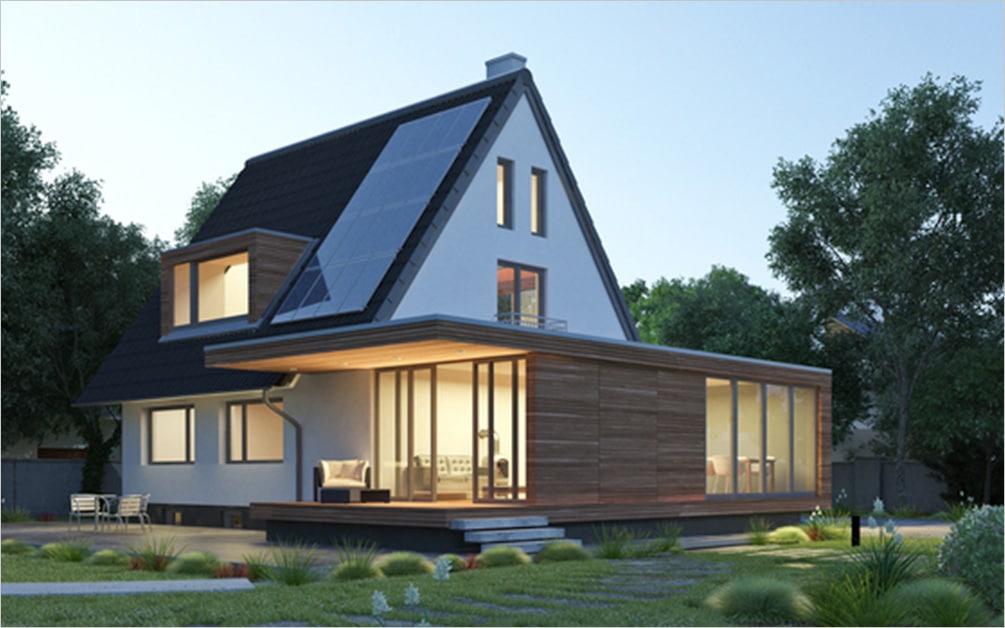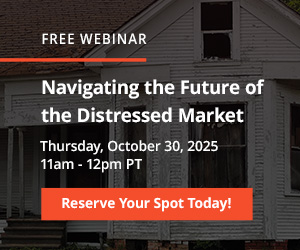Nationwide, 46.1 Percent of Homes Considered Equity-Rich; Share of Seriously Underwater Homes Up Year-Over-Year in 46 States
IRVINE, Calif. —October 23, 2025— ATTOM, a leading curator of land, property data, and real estate analytics, today released its third quarter 2025 U.S. Home Equity & Underwater Report, which shows that 46.1 percent of mortgaged residential properties in the country were equity-rich, meaning the combined estimated amount of loan balances secured by those properties was no more than half of their estimated market value.
That was down from 47.4 percent in the previous quarter and 48.3 percent at the same time last year even though the national median home price rose to a record $370,000 in the third quarter of 2025 (See this ATTOM report for home values: Home Sales Profits Up in Third Quarter to Near 50 Percent Margin).
About 2.8 percent of mortgaged residential properties in the U.S. were considered seriously underwater in the third quarter of 2025, meaning the combined estimated balance of loans secured by the properties were at least 25 percent more than the properties’ estimated market value. That was up from 2.7 percent in the second quarter and 2.5 percent in the third quarter of 2024.
“Over the past year, the share of equity-rich homes has eased slightly while the portion of seriously underwater properties has edged up,” said Rob Barber, CEO of ATTOM. “After several years of strong equity growth that peaked in 2022, homeowner equity levels appear to be stabilizing. The modest fluctuations seen over the last few quarters may suggest a housing market that’s finding balance after an extended period of appreciation.”
Share of equity-rich homes up in less than half of states
The share of equity-rich homes rose in 19 states compared to the second quarter of 2025 and in 11 states compared to the third quarter of 2024.
The states with the largest year-over-year increases in the share of equity-rich homes were Alaska (up from 31.9 percent in Q3 2024 to 34.3 percent in Q3 2025); Illinois (up from 34 percent to 35.8 percent); New Jersey (up from 52 percent to 53.8 percent); New York (up from 55.2 percent to 57 percent); and Connecticut (up from 47.7 percent to 49.1 percent).
The markets with the largest year-over-year drops in their shares of equity-rich homes were Florida (down from 52.5 percent in Q3 2024 to 46 percent in Q3 2025); Arizona (down from 50 percent to 44.5 percent); Colorado (down from 48 percent to 43 percent); the District of Columbia (down from 34.1 percent to 29.2 percent); and Georgia (down from 46.3 percent to 41.8 percent).
Seriously underwater homes on the rise in most states
The share of mortgaged properties considered seriously underwater rose in 35 states quarter-over-quarter and in 46 states year-over-year.
Markets with the largest annual increases in their proportion of seriously underwater homes were the District of Columbia (up from 3.3 percent in Q3 2024 to 5.1 percent in Q3 2025); Maryland (up from 2.4 percent to 3.5 percent); Louisiana (up from 10.1 percent to 11.2 percent); Georgia (up from 2.6 percent to 3.6 percent); and Oklahoma (up from 4.8 percent to 5.4 percent).
The states that saw the largest annual drops in seriously underwater rates were Mississippi (down from 7.2 percent in Q3 2024 to 6.6 percent in Q3 2025); Wyoming (down from 2.4 percent to 2.2 percent); Vermont (down from 0.7 percent to 0.6 percent); South Dakota (down from 3.1 percent to 3 percent); and New York (down from 1.8 percent to 1.7 percent).
Three quarters of metros see share of equity-rich homes fall year-over-year
The states with the highest rates of equity-rich homes in the third quarter were Vermont (86.8 percent equity-rich); New Hampshire (61.4 percent); Rhode Island (59.8 percent); Maine (58.6 percent); and Montana (57.8 percent).
The markets with the lowest rates of equity-rich homes were Louisiana (18.6 percent equity-rich); Maryland (29.1 percent); the District of Columbia (29.2 percent); North Dakota (32.6 percent); and Oklahoma (33.7 percent).
The share of equity-rich homes fell quarter-over-quarter in 71.8 percent (79) of the 110 metropolitan statistical areas in ATTOM’s analysis with populations of at least 500,000. Year-over-year, the share of equity-rich homes was down in 77.3 percent (85) of the 110 metro areas.
The metro areas with the highest rates of equity-rich homes in the third quarter of 2025 were San Jose, CA (65.8 percent equity-rich); Buffalo, NY (63.5 percent); Portland, ME (61.2 percent); Los Angeles, CA (60.5 percent); and Syracuse, NY (59.9 percent).
The metros with the smallest shares of equity-rich homes were Baton Rouge, LA (14.8 percent equity-rich); New Orleans, LA (23.5 percent); Little Rock, AR (28.3 percent); Baltimore, MD (28.4 percent); and Des Moines, IA (29.3 percent).
Midwestern counties boast highest equity rates
Among 1,763 counties with at least 2,500 homes carrying mortgages in the third quarter of 2025, 22 of the 30 counties with the highest rates of equity-rich homes were located in the Midwest. Michigan led with eleven counties, followed by Wisconsin with six and Indiana with four.
The counties with the highest proportions of equity-rich homes were Marquette County, MI (91.3 percent equity-rich); Chittenden County, VT (91.1 percent); Benzie County, MI (90.8 percent); Portage County, WI (90.1 percent); and Manistee County, MI (89.7 percent).
At the other end of the spectrum, 21 of the 30 counties with the lowest proportions of equity-rich homes were in Louisiana.
The counties with the lowest equity-rich rates were Vernon Parish, LA (7.6 percent equity-rich); Iberville Parish, LA (10.4 percent); Long County, GA (10.8 percent); Acadia Parish, LA (10.8 percent); and Ascension Parish, LA (11.2 percent).
Majority of homes equity-rich in more than a third of zip codes
At least half of the mortgaged homes were equity-rich in 37.8 percent (3,944) of the 10,439 zip codes that had at least 1,500 homes with mortgages in the third quarter of 2025. This was down from 41.8 percent in the previous quarter.
The zip codes with the highest proportions of equity-rich homes were 59047 in Livingston, MT (95.7 percent equity-rich); 49855 in Marquette, MI (92.3 percent); 84532 in Moab, UT (89.8 percent); 49660 in Manistee, MI (89.5 percent); and 05401 in Burlington, VT (89.3 percent).
Underwater rates low across New England
The states with the largest shares of seriously underwater homes were Louisiana (11.2 percent seriously underwater); Mississippi (6.6 percent); Kentucky (6 percent); Arkansas (5.7 percent); and Iowa (5.6 percent).
Those with the lowest shares were Vermont (0.6 percent seriously underwater); Rhode Island (1 percent); New Hampshire (1.1 percent); Massachusetts (1.2 percent); and Connecticut (1.5 percent).
Among the 110 metro areas analyzed, the lowest rates of seriously underwater homes were in San Jose, CA (0.8 percent seriously underwater); Providence, RI (1 percent); San Diego, CA (1.1 percent); Boston, MA (1.2 percent); and Los Angeles, CA (1.3 percent).
The metros with the highest rates of seriously underwater homes were Baton Rouge, LA (11.7 percent); New Orleans, LA (8.3 percent); Little Rock, AR (5.8 percent); Jackson, MS (5.8 percent); and Memphis, TN (5.3 percent).
More than 10 percent of homes were seriously underwater in 2.6 percent (270) of the 10,439 zip codes analyzed.
The zip codes with the highest proportions of seriously underwater homes were 10709 in Eastchester, NY (58.6 percent); 19132 in Philadelphia, PA (34 percent); 19121 in Philadelphia, PA (29.4 percent); 19133 in Philadelphia, PA (27.6 percent); and 70805 in Baton Rouge, LA (27.3 percent).
Conclusion
Homeowner equity declined slightly in the third quarter of 2025, with 46.1 percent of mortgaged residential properties considered equity-rich, down from 47.4 percent in the prior quarter and 48.3 percent a year earlier. Meanwhile, the share of seriously underwater homes inched up to 2.8 percent, rising year-over-year in 46 states despite record-high national home prices.
Report methodology
The ATTOM U.S. Home Equity & Underwater report provides counts of properties based on several categories of equity — or loan to value (LTV) — at the state, metro, county and zip code level, along with the percentage of total properties with a mortgage that each equity category represents. The equity/LTV is calculated based on record-level loan model estimating position and amount of loans secured by a property and a record-level automated valuation model (AVM) derived from publicly recorded mortgage and deed of trust data collected and licensed by ATTOM nationwide for more than 158 million U.S. properties. The ATTOM Home Equity and Underwater report has been updated and modified to better reflect a housing market focused on the traditional home buying process. ATTOM found that in markets where investors were more prominent, they would offset the loan to value ratio due to sales involving multiple properties with a single jumbo loan encompassing all of the properties. Therefore, going forward such activity is now excluded from the reports in order to provide traditional consumer home purchase and loan activity.
Definitions
Seriously underwater: Loan to value ratio of 125 percent or above, meaning the property owner owed at least 25 percent more than the estimated market value of the property.
Equity-rich: Loan to value ratio of 50 percent or lower, meaning the property owner had at least 50 percent equity.
About ATTOM
ATTOM powers innovation across industries with premium property data and analytics covering 158 million U.S. properties—99% of the population. Our multi-sourced real estate data includes property tax, deed, mortgage, foreclosure, environmental risk, natural hazard, neighborhood and geospatial boundary information, all validated through a rigorous 20-step process and linked by a unique ATTOM ID.
From flexible delivery solutions—such as Property Data APIs, Bulk File Licenses, Cloud Delivery, Real Estate Market Trends—to AI-Ready datasets, ATTOM fuels smarter decision-making across industries including real estate, mortgage, insurance, government, and more.
Media Contact:
Megan Hunt
Megan.hunt@attomdata.com
Data and Report Licensing:
949.502.8313


